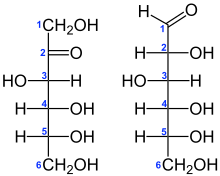**Production and Commerce**:
– HFCS replaced sucrose in the U.S. food industry.
– Production quotas, import tariffs, and corn subsidies contributed to increased HFCS use.
– HFCS simplifies food and beverage manufacturing processes.
– HFCS is a primary ingredient in commercial pancake syrup.
– HFCS varieties include HFCS 42, HFCS 55, and HFCS 70.
– Global HFCS market expected to grow from $5.9 billion in 2019 to $7.6 billion in 2024.
– China, Japan, and Mexico are significant players in the HFCS market.
– HFCS production in the U.S. was 8.3 million tons in 2017.
– U.S. consumption of HFCS peaked at 37.5lb per person in 1999, declining to 22.1lb in 2018.
– Exports of HFCS were valued at $436 million in 2014, with Mexico receiving 75%.
– Large corporations lobby for government corn subsidies to support HFCS production.
**International Market Insights**:
– China, the EU, Japan, Mexico, and the Philippines are key players in the HFCS market.
– China accounts for 20% of sweetener demand with HFCS.
– Japan imports HFCS from the U.S. for production.
– Mexico is the largest importer of U.S. HFCS.
– The Philippines was the largest importer of Chinese HFCS.
– Vietnam imports most of its HFCS from China and South Korea.
– HFCS is popular in China due to lower prices compared to sucrose.
– Japan consumed approximately 800,000 tonnes of HFCS in 2016.
– Mexico shifted from sugar to HFCS in the soft drink industry.
– The Philippine government imposed a tax on drinks sweetened with HFCS.
**Nutritional Value and Health Impacts**:
– HFCS contains no fat, protein, or significant micronutrients.
– In a 100g reference amount, HFCS supplies 281 calories.
– HFCS is 76% carbohydrates and 24% water.
– No scientific consensus on the impact of fructose or HFCS on cardiometabolic markers.
– Lowering sugary beverage consumption may reduce hepatic fat accumulation.
– HFCS consumption is not significantly associated with liver diseases.
– FDA deems HFCS safe for food and beverage manufacturing.
– USDA recommends limiting added sugars in the diet.
– American Heart Association recommends limiting added sugar intake.
**Regulatory and Safety Concerns**:
– FDA accepted HFCS as generally recognized as safe in 1983.
– HFCS processing involves similar steps to other sweetener products.
– HFCS content of fructose is consistent across samples.
– Concerns about reactive compounds in HFCS were dismissed.
– Mercury residues in HFCS batches were addressed by the industry.
– Industry attempts to change the name of high fructose corn syrup.
– Companies removing high-fructose corn syrup from products.
– Hershey’s consideration to replace high-fructose corn syrup with sugar.
**Historical Development and Usage**:
– Commercial production of corn syrup started in 1964.
– Industrial users rapidly adopted HFCS in the 1970s due to its cost-effectiveness.
– HFCS use in the U.S. is comparable to sucrose consumption.
– U.S. sugar industry has had trade protection with tariffs on foreign sugar since 1789.
– From 1970 to 2000, there was a 25% increase in added sugars in the U.S.
– HFCS replaced sucrose as the primary sweetener in US soft drinks.
– Yoshiyuki Takasaki developed a heat-stable xylose isomerase enzyme from yeast in 1965–1970.
– Clinton Corn Processing Company obtained an exclusive license to manufacture glucose isomerase from Streptomyces bacteria in 1967.
High-fructose corn syrup (HFCS), also known as glucose–fructose, isoglucose and glucose–fructose syrup, is a sweetener made from corn starch. As in the production of conventional corn syrup, the starch is broken down into glucose by enzymes. To make HFCS, the corn syrup is further processed by D-xylose isomerase to convert some of its glucose into fructose. HFCS was first marketed in the early 1970s by the Clinton Corn Processing Company, together with the Japanese Agency of Industrial Science and Technology, where the enzyme was discovered in 1965.

As a sweetener, HFCS is often compared to granulated sugar, but manufacturing advantages of HFCS over sugar include that it is cheaper. "HFCS 42" and "HFCS 55" refer to dry weight fructose compositions of 42% and 55% respectively, the rest being glucose. HFCS 42 is mainly used for processed foods and breakfast cereals, whereas HFCS 55 is used mostly for production of soft drinks.
The United States Food and Drug Administration (FDA) states that it is not aware of evidence showing that HFCS is less safe than traditional sweeteners such as sucrose and honey. Uses and exports of HFCS from American producers have grown steadily during the early 21st century.
